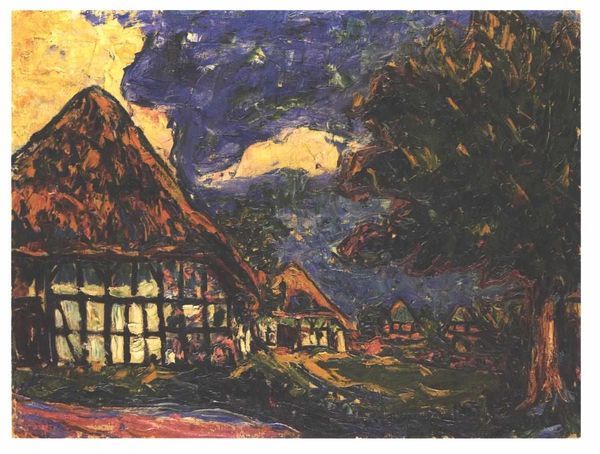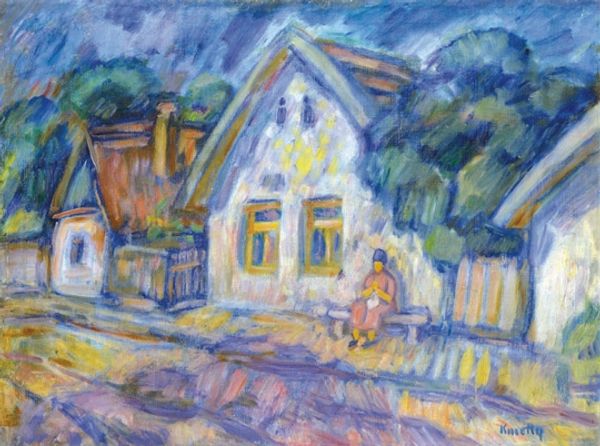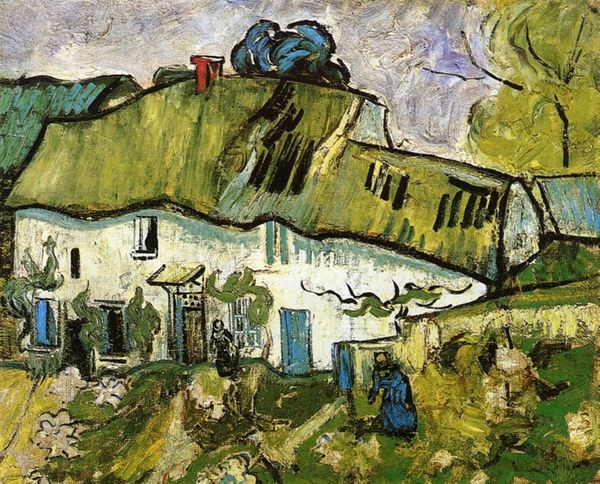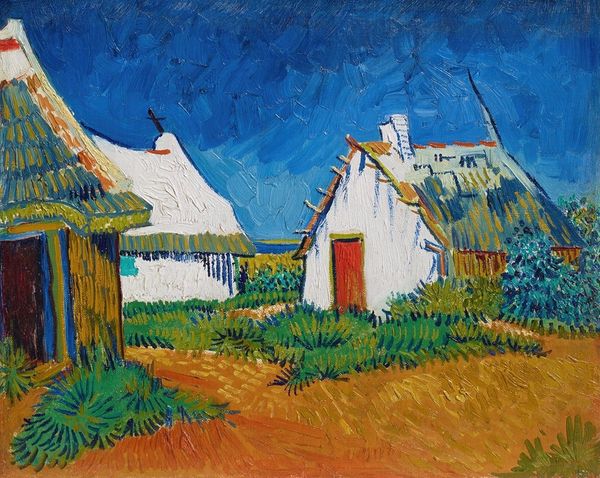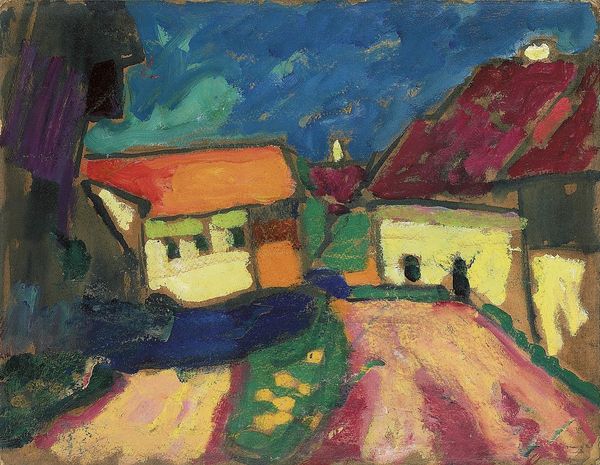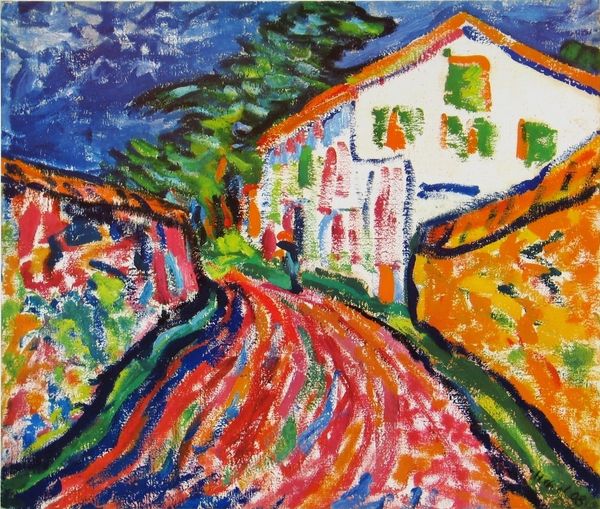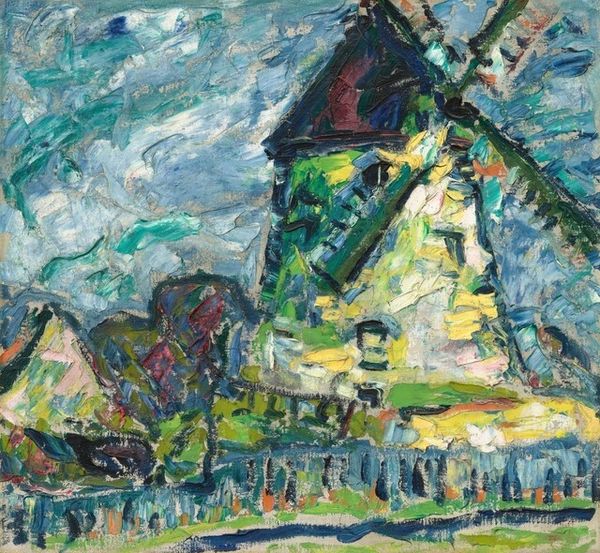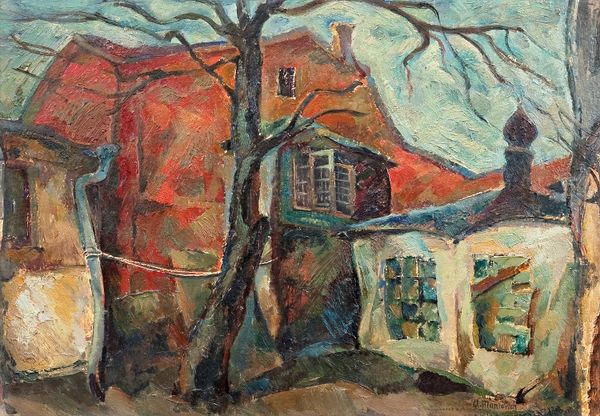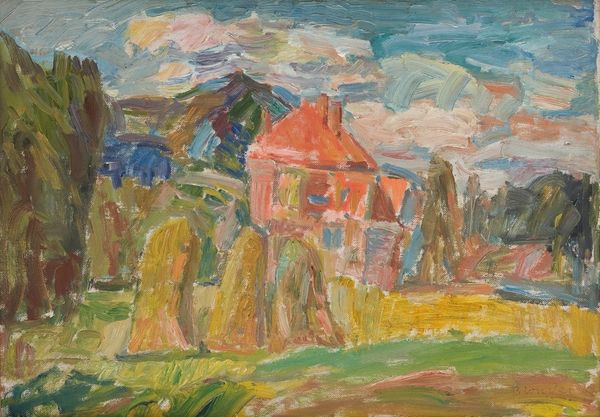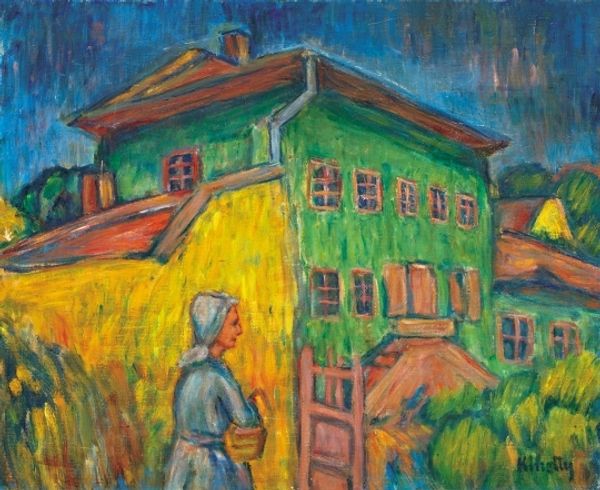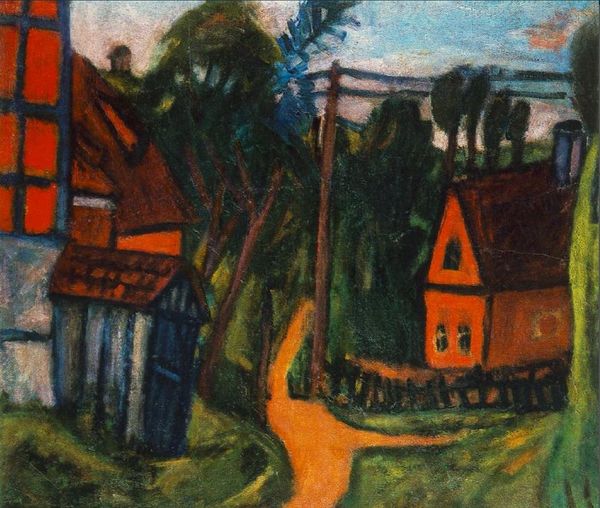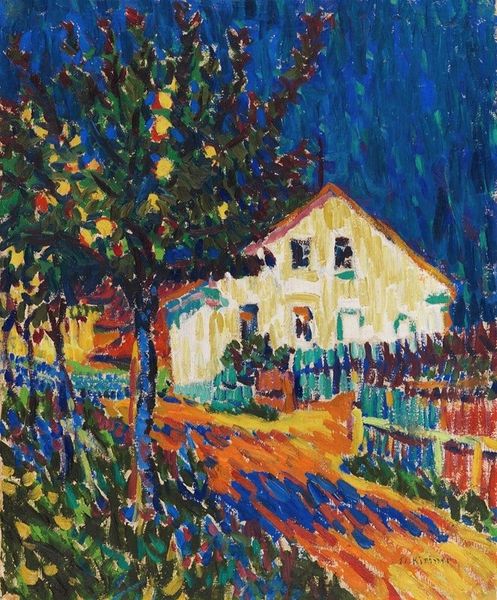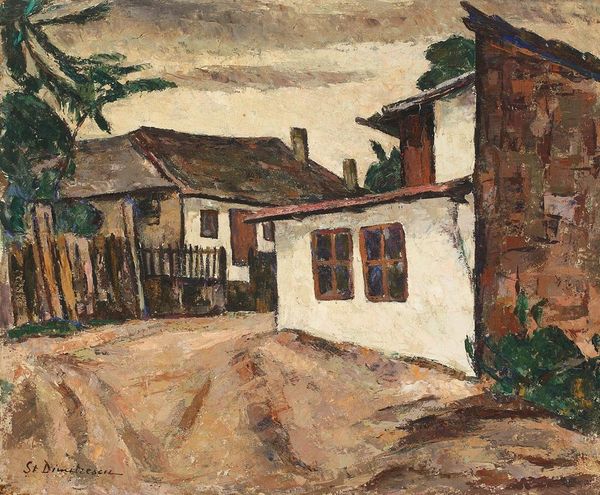
painting, oil-paint
#
fauvism
#
fauvism
#
painting
#
oil-paint
#
landscape
#
german-expressionism
#
expressionism
#
naive art
#
expressionist
Copyright: Public Domain: Artvee
Curator: Looking at Kirchner's "Fehmarn Houses" from 1908, I'm immediately struck by how turbulent yet strangely comforting it feels. It's like a cozy nightmare. Editor: Cozy nightmare, I love that! To me, it feels almost carnivalesque, but with a slightly menacing undertone. Kirchner's thick application of oil-paint really makes those cottages in Fehmarn practically vibrate, wouldn’t you agree? Curator: Absolutely, the materiality itself feels radical. Now, "Fehmarn Houses" occupies an interesting space within the historical narrative of Expressionism and even brushes against Fauvism. Painted during Kirchner's pre-Die Brücke period, one can trace its lineage back to Van Gogh's emotionally charged landscapes while recognizing the genesis of what will become the group's signature style. It reflects not only the formal innovations but also anxieties of pre-war Germany. Editor: Anxieties, definitely, though there’s a naivete, too. See how those buildings sort of huddle together? And that massive tree on the right, almost guarding the village? It's like he’s both celebrating the simple life and warning against some impending doom – painting what he feels more than what he sees, I bet! That blue… it is almost an after-image. Curator: It speaks to a conflicted national identity too, grappling with rapid modernization. The return to landscapes can be seen as a utopian impulse, an escape, while those distorted forms also mirror a societal unease percolating beneath the surface of bourgeois comfort. His choices, therefore, resonate with socio-political resistance in its own manner. Editor: I wonder if anyone on Fehmarn Island felt Kirchner was capturing *their* truth back then, or if they thought, “Who’s this crazy painter making our homes look like they’re about to melt?” The magic of art, though, is that he has preserved that reality as seen through his eyes. Curator: Yes, this particular moment through his singular lens offers so many avenues into understanding Kirchner's oeuvre and the cultural dynamics of the period. I'm especially taken by how he reclaims the rural setting, offering a very nuanced comment on tradition versus progress. Editor: And for me, it's that lingering feeling—like I’ve stepped into a place both familiar and alien, a world on the verge of some significant… change. Thank you, Kirchner, for keeping us on our toes a century later!
Comments
No comments
Be the first to comment and join the conversation on the ultimate creative platform.
